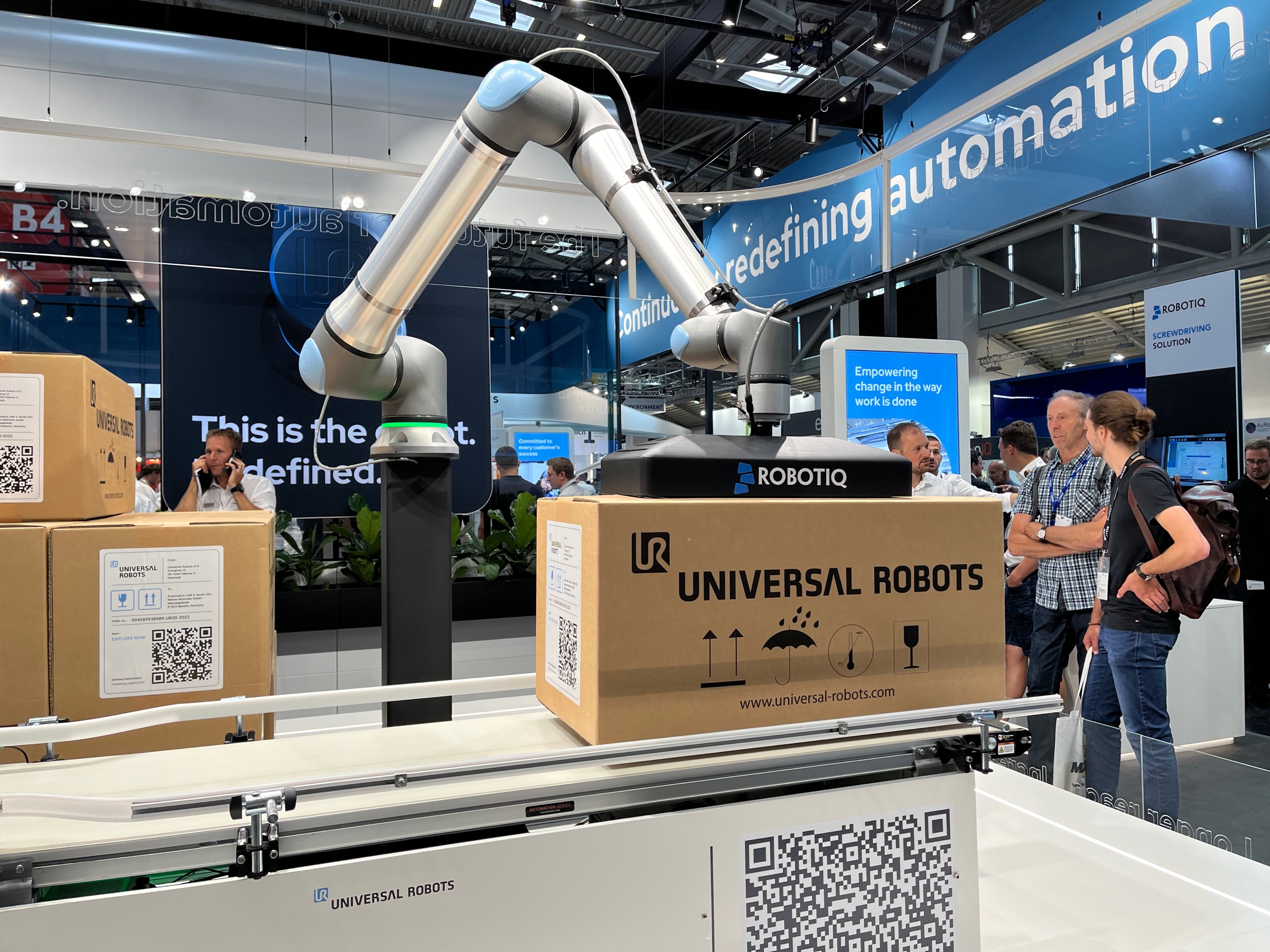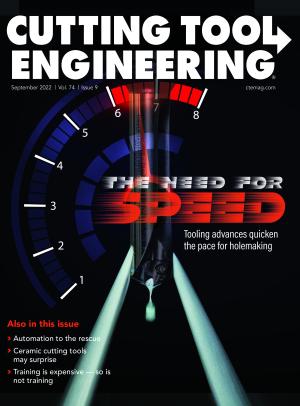Although it’s not on the market yet, a maker of collaborative robots has unveiled a redesigned cobot with twice the load-carrying capacity of the currently available version. Benefits of the new design also include longer reach, faster operation and higher throughput at machine shops and other industrial settings.
Manufactured by Denmark-based Universal Robots A/S, the UR20 cobot can handle payloads of up to 20 kg as opposed to the 10 kg maximum of the UR10 model. Besides handling double the payload, the company says the UR20 offers 30% more speed and torque than the UR10 thanks to major modifications to the cobot joint.
“We’ve changed the whole architecture of the joint design, which allows us to push more power into the joint and increases the torque in the output,” said Joe Campbell, senior strategic marketing manager at Universal Robots USA Inc. in Ann Arbor, Michigan. “This is how we get not just the (UR20’s) payload but also get more speed out of it.”
He said the redesign also simplifies joint maintenance and improves reliability by significantly reducing part count.
Another major UR20 selling point is a reach of up to 1,750 mm compared with 1,300 mm for the UR10.
“Given the reach of a robot and the size of the parts, you can only fit so many pieces in the work envelope,” Campbell said. “With the UR20, we can fit more pieces in the work envelope, which means (machines) can run unmanned for a longer period of time.”

A longer reach also means that the UR20 can support a wider range of machine tools, he said, including bigger CNC tools with larger spindles and cutting environments.
As for software, Campbell said the company developed advanced servo-algorithms that help the UR20 stop more quickly after moving from one point to another.
“When people think about (reducing) cycle time, typically they think about the robot moving fast,” he said. “But the other part of improving cycle time is getting the robot to fully stop quickly.”
Like the UR10, the UR20 can accommodate 2-up grippers when used for machine loading and unloading applications. Campbell said this term refers to a configuration with two distinct grippers on the end of a robot arm, one for carrying a finished part and another for carrying a blank for the next machining process. This, he said, allows a robot to remove a finished part from a machine and then load a blank in the same trip instead of removing and dropping off a finished part and then coming back to the machine to load a blank, which is necessary when a robot arm is equipped with only a single gripper.
“You get a big boost in throughput and productivity by using the 2-up gripper approach rather than the single-gripper approach,” he said.
Although the UR10 can also be fitted with 2-up grippers, Campbell said the additional payload capacity of the UR20 expands the range of parts that can be handled by dual grippers. For example, two 5 kg parts plus a gripper would be a no-go for the UR10 but not a problem for the UR20.
Unveiled in June at the Automatica trade fair in Munich, the UR20 will make its first U.S. appearance at this month’s IMTS. If you want one at your shop, however, you still have a substantial wait ahead of you. At press time, Universal Robots anticipated taking orders for the new cobot in the first quarter of 2023. If this turns out to be the case, the company said it would be on track to begin shipping in mid-2023.
A price for the UR20 has yet to be set, but “my expectations are that it’s going to be more expensive than the UR10 just because bigger costs more,” Campbell said.
“If you look at all of our pro-ducts, we’re certainly not the low-cost leader,” he said. “But I think we’re going to be more than competitive.”
Contact Details
Related Glossary Terms
- arbor
arbor
Shaft used for rotary support in machining applications. In grinding, the spindle for mounting the wheel; in milling and other cutting operations, the shaft for mounting the cutter.
- computer numerical control ( CNC)
computer numerical control ( CNC)
Microprocessor-based controller dedicated to a machine tool that permits the creation or modification of parts. Programmed numerical control activates the machine’s servos and spindle drives and controls the various machining operations. See DNC, direct numerical control; NC, numerical control.
- payload ( workload)
payload ( workload)
Maximum load that the robot can handle safely.
- work envelope
work envelope
Cube, sphere, cylinder or other physical space within which the cutting tool is capable of reaching.



